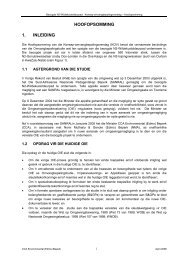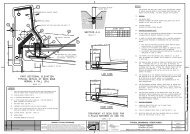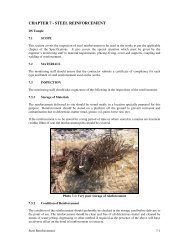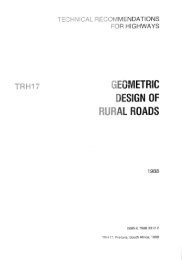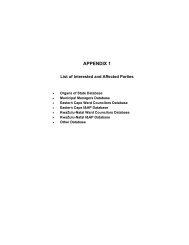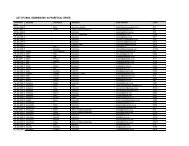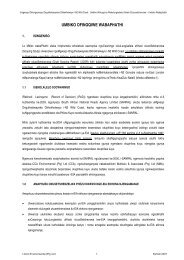SAPEM Chapter 2 - Sanral
SAPEM Chapter 2 - Sanral
SAPEM Chapter 2 - Sanral
Create successful ePaper yourself
Turn your PDF publications into a flip-book with our unique Google optimized e-Paper software.
9.3 Mechanistic Pavement Analysis<br />
South African Pavement Engineering Manual<br />
<strong>Chapter</strong> 2: Pavement Composition and Behaviour<br />
Pavements are often analysed mechanistically. That is, the pavement structure is considered as a mechanism that is<br />
subjected to loading. Although this is discussed in great detail in <strong>Chapter</strong> 10, Sections 6, 7, 8 and 9, this section is<br />
intended to give a brief introduction to this type of analysis.<br />
In a mechanistic analysis, the material in each layer is described by the stiffness and Poisson’s Ratio. Poisson’s Ratio<br />
is defined and discussed in Section 10.1.1. Stiffness provides a good indication of the load spreading capacity of the<br />
layer. Stiffness is a generic term for this property, and is an approximation of Young’s modulus (Section 10.1) and<br />
the material’s resilient modulus (Section 10.2).<br />
Two examples are given to illustrate mechanistic pavement analyses.<br />
Example 1:<br />
Bound Upper Layer on Unbound Support<br />
In this example, the upper layer is bound, i.e., stabilised or HMA base layer, and the lower layer is unbound, i.e., a<br />
granular support layer. The conceptual pavement is illustrated in Figure 23, along with some of the idealized linearelastic<br />
compressive and tensile stresses ()in the upper layer. In this type of model, the loading causes the upper<br />
layer to bend. The following stress or strain parameters are useful:<br />
The stiffness of the layers is denoted E.<br />
The vertical deflection () directly under the wheel load. Vertical deflection is<br />
the integral of the vertical strains.<br />
Directly under the wheel, compressive stresses are introduced, denoted zz<br />
(vertical), yy (horizontal). Not shown, but introduced, are xx horizontal<br />
stresses.<br />
At the bottom of the upper layer, tensile stresses and strains are introduced,<br />
illustrated only by yy in the figure.<br />
At the top of the bottom layer, vertical compressive stresses ( zz ) and strains<br />
are introduced.<br />
Modular Ratio<br />
The ratio of the stiffness of<br />
the upper layer and the<br />
stiffness of the lower layer is<br />
known as the modular ratio.<br />
Granular materials cannot typically carry any tensile stresses. One of the fundamentals of pavement engineering is<br />
to ensure that such “tensile” stresses do not actually occur in granular layers by avoiding high stiffness ratios<br />
(modular ratios) between any two consecutive pavement layers. If such a situation actually occurs in practice, the<br />
layer decompacts and becomes less stiff, and results in more stress transferring to the underlying layer. If the layer<br />
is well supported, the stresses at the bottom of the layer are compressive and the materials in the layer could easily<br />
exhibit stress-stiffening behaviour due to the confining effects of the underlying layer.<br />
Example 2:<br />
Unbound Upper Layer on Unbound Support<br />
In this example, illustrated in Figure 24 both layers are unbound, i.e., granular materials. In this case, the upper<br />
layer cannot bend, therefore the load is carried through shear forces and shear stresses. The figure shows the<br />
greater spread of shear forces in the upper layer that has a higher modulus (E) than the lower layer. The concept<br />
involves ever decreasing vertical stresses and strains as the load is spread over an increasing area so that the load or<br />
stress imposed on the weaker lower layer is restricted to acceptable levels.<br />
Section 9: Mechanics of Materials (Stresses and Strains)<br />
Page 26





